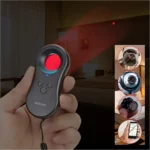The future is here, and it’s making homes smarter, more efficient, and more connected than ever. Welcome to the era of smart home automation. From controlling your home’s temperature with a tap to ensuring your property’s security while you’re away, the possibilities with smart home automation are nearly limitless. This guide provides an in-depth look into smart home automation, its benefits, and how you can integrate it seamlessly into your daily life.
What is Smart Home Automation?
Smart home automation refers to the use of connected devices to automate and control home functions such as lighting, heating, security, and entertainment. These devices communicate with each other and can be controlled remotely via a central hub or a mobile application.
Key Components of Smart Home Automation
- Central Hub/Controller: This is the brain of your smart home system. Devices such as Amazon Echo, Google Home, or Apple HomeKit act as central controllers that integrate various smart devices.
- Smart Lighting: Control the ambiance of your rooms. Adjust brightness, change colors, or set schedules – all remotely.
- Smart Thermostats: Automate heating and cooling based on your preferences. Save energy and ensure optimal room temperature.
- Smart Security Systems: From smart doorbells with cameras to automated lock systems, ensure your home’s safety even when you’re miles away.
- Smart Entertainment: Voice-controlled speakers, smart TVs, and automated home theaters redefine entertainment.
- Smart Appliances: Refrigerators that tell you when you’re out of milk, ovens that can be preheated on your way home – the kitchen has never been smarter.
- Smart Sensors: Sensors for motion, temperature, smoke, and flood can alert you of any changes in the environment.
Benefits of Smart Home Automation
- Convenience: Control multiple home functions through a single device.
- Energy Efficiency: Automated systems optimize power usage, leading to energy savings.
- Security: Enhanced safety with smart surveillance and alert systems.
- Cost Savings: Reduced energy bills and increased appliance longevity.
- Customization: Tailor your home environment to your preferences.
Getting Started with Smart Home Automation
- Determine Your Needs: Do you want a fully automated home or specific smart functionalities?
- Choose a Central Hub: Decide on a primary control system.
- Start Small: Begin with one or two devices, such as smart bulbs or thermostats.
- Integrate Slowly: As you become comfortable, expand your smart home system.
Popular Smart Home Brands
- Amazon (Echo/Alexa)
- Google (Google Home)
- Apple (HomeKit)
- Samsung (SmartThings)
- Philips (Hue Lighting)
Future of Smart Home Automation
As technology advances, homes will become even more integrated, intuitive, and responsive. We’re looking at AI-driven homes that anticipate needs and make decisions to improve residents’ comfort and security.
Conclusion
Smart home automation is more than just a trend; it’s a significant shift in how we interact with our living spaces. It brings efficiency, security, and convenience, transforming houses into connected homes. Whether you’re new to this world or a seasoned tech enthusiast, there’s always something new to explore in smart home automation.


